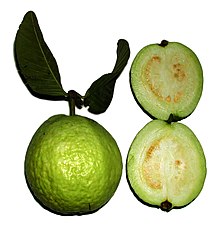3-Phenylpropylacetat
aus Wikipedia, der freien Enzyklopädie
| Strukturformel | |||||||||||||||||||
|---|---|---|---|---|---|---|---|---|---|---|---|---|---|---|---|---|---|---|---|

| |||||||||||||||||||
| Allgemeines | |||||||||||||||||||
| Name | 3-Phenylpropylacetat | ||||||||||||||||||
| Andere Namen |
| ||||||||||||||||||
| Summenformel | C11H14O2 | ||||||||||||||||||
| Kurzbeschreibung |
farblose Flüssigkeit[1] | ||||||||||||||||||
| Externe Identifikatoren/Datenbanken | |||||||||||||||||||
| |||||||||||||||||||
| Eigenschaften | |||||||||||||||||||
| Molare Masse | 178,23 g·mol−1 | ||||||||||||||||||
| Aggregatzustand |
flüssig[2] | ||||||||||||||||||
| Dichte |
1,012 g·cm−3 (25 °C)[2] | ||||||||||||||||||
| Siedepunkt |
244 °C[2] | ||||||||||||||||||
| Brechungsindex |
1,496 (20 °C)[2] | ||||||||||||||||||
| Sicherheitshinweise | |||||||||||||||||||
| |||||||||||||||||||
| Soweit möglich und gebräuchlich, werden SI-Einheiten verwendet. Wenn nicht anders vermerkt, gelten die angegebenen Daten bei Standardbedingungen (0 °C, 1000 hPa). Brechungsindex: Na-D-Linie, 20 °C | |||||||||||||||||||
3-Phenylpropylacetat ist ein natürlich vorkommender Carbonsäureester, der sich von 3-Phenylpropanol und Essigsäure ableitet.
Vorkommen
[Bearbeiten | Quelltext bearbeiten]
3-Phenylpropylacetat kommt natürlich in Zuckermelone (Cucumis melo)[3][4] und Guave vor.[5]
Herstellung
[Bearbeiten | Quelltext bearbeiten]3-Phenylpropylacetat kann durch Acetylierung von 3-Phenylpropanol mit Diacetoxytriphenylphosphin in Acetonitril hergestellt werden. Das Acetylierungsreagenz kann wiederum in situ durch Reaktion von Triphenylphosphin und Ammoniumacetat mit elementarem Brom oder NBS hergestellt werden.[6] Auch eine biotechnologische Herstellung mit einem entsprechend designten E. coli-Stamm ist möglich.[7]
Eigenschaften
[Bearbeiten | Quelltext bearbeiten]3-Phenylpropylacetat ist eine klare Flüssigkeit mit einem würzigen, blumigen Geruch.[8]
Verwendung
[Bearbeiten | Quelltext bearbeiten]3-Phenylpropylacetat wird als Duftstoff in Kosmetika und Reinigungsmitteln verwendet, jedoch nur in geringen Mengen von weltweit einigen Tonnen pro Jahr.[8] 3-Phenylpropylacetat wird außerdem als Aromastoff verwendet und ist in der EU unter der FL-Nummer 09.032 für Lebensmittel allgemein zugelassen.[9]
Sicherheitshinweise
[Bearbeiten | Quelltext bearbeiten]3-Phenylpropylacetat hat einen Flammpunkt von 113 °C.[2]
Toxikologie
[Bearbeiten | Quelltext bearbeiten]Die akute Toxizität von 3-Phenylpropylacetat ist gering. In einer Studie an Ratten wurde ein oraler LD50-Wert von 4,7 g/kg Körpergewicht bestimmt. In Studien an Kaninchen und an menschlichen Studienteilnehmern konnte auch bei höheren Konzentrationen keine Hautreizung festgestellt werden. Ebenso wenig wurde bei Studien mit Meerschweinchen und menschlichen Studienteilnehmern eine Sensibilisierungswirkung festgestellt.[8]
Einzelnachweise
[Bearbeiten | Quelltext bearbeiten]- ↑ Eintrag zu 3-Phenylpropyl Acetate bei TCI Europe, abgerufen am 15. Januar 2024.
- ↑ a b c d e f g Datenblatt 3-Phenylpropylacetat bei Sigma-Aldrich, abgerufen am 14. Januar 2024 (PDF).
- ↑ Jorge A. Pino, Ariel Ortega, Aristides Rosado: Volatile Constituents of Guava ( Psidium guajava L.) Fruits from Cuba. In: Journal of Essential Oil Research. Band 11, Nr. 5, September 1999, S. 623–628, doi:10.1080/10412905.1999.9701227.
- ↑ Charng Cherng. Chyau, Shu Yueh. Chen, Chung May. Wu: Differences of volatile and nonvolatile constituents between mature and ripe guava (Psidium guajava Linn.) fruits. In: Journal of Agricultural and Food Chemistry. Band 40, Nr. 5, Mai 1992, S. 846–849, doi:10.1021/jf00017a028.
- ↑ Olusola Lamikanra, Benito Juaraez, Michael A Watson, Olga A Richard: Effect of cutting and storage on sensory traits of cantaloupe melon cultivars with extended postharvest shelf life. In: Journal of the Science of Food and Agriculture. Band 83, Nr. 7, 15. Mai 2003, S. 702–708, doi:10.1002/jsfa.1337.
- ↑ Nasser Iranpoor, Habib Firouzabadi, Elham Etemadi Davan: In situ generated Ph3P(OAc)2 as a novel reagent for the efficient acetylation of alcohols and thiols at room temperature. In: Tetrahedron Letters. Band 54, Nr. 14, April 2013, S. 1813–1816, doi:10.1016/j.tetlet.2013.01.068.
- ↑ Jing Sun, Zhi Zhu, Qingfang Lin, Shilian Qi, Qianqian Li, Yang Zhou, Rongpeng Li: Metabolic Engineering of Escherichia coli for the Biosynthesis of 3-Phenylpropionic Acid and 3-Phenylpropyl Acetate. In: Journal of Agricultural and Food Chemistry. Band 71, Nr. 19, 17. Mai 2023, S. 7451–7458, doi:10.1021/acs.jafc.3c00330.
- ↑ a b c D. McGinty, C.S. Letizia, A.M. Api: Fragrance material review on 3-phenylpropyl acetate. In: Food and Chemical Toxicology. Band 50, September 2012, S. S457–S461, doi:10.1016/j.fct.2012.02.080.
- ↑ 3-Phenylpropyl acetate. In: Food and Feed Information Portal Database | FIP. Abgerufen am 14. Januar 2024.
Text is available under the CC BY-SA 4.0 license; additional terms may apply.
Images, videos and audio are available under their respective licenses.
